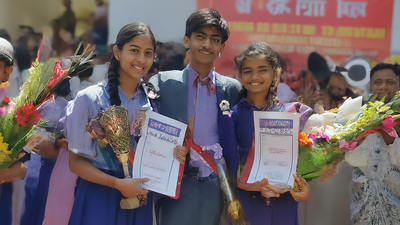F-1 visa in 2025: What Indian students need to know about delays and policy changes

Indian students eyeing the US for higher education in 2025 face a shifting landscape as F-1 visa policies tighten and delays mount. With over 331,602 Indian students enrolled in US institutions during the 2023-2024 academic year, according to the Open Doors report, the stakes are high for those planning their academic futures abroad.
Recent trends signal tougher times ahead, with visa approvals dropping and processing hurdles growing. A 38% decline in F-1 visas issued to Indian students—from 103,495 in 2023 to 64,008 in 2024—highlights the challenges, compounded by stricter regulations and geopolitical tensions. As the US remains a top destination, understanding these changes is crucial for aspirants.
Sharp decline in approvals
The fall in F-1 visa issuances marks a significant shift. In 2023, the US processed over 140,000 student visas for Indians, but 2024 saw this number plummet. Experts point to increased scrutiny, with consular officers rejecting 41% of the 6.79 lakh global F-1 applications in 2023-2024, up from 36% the previous year. For Indian students, this translates to fewer opportunities and greater uncertainty.
Policy shifts under new administration
Since Donald Trump’s return to office in January 2025, immigration policies have hardened. The administration has flagged stricter F-1 visa rules, echoing past proposals like limiting visa durations to four years—or two in some cases—down from the flexible ‘duration of status’ norm. Optional Practical Training (OPT), offering 12 months of work (36 for STEM graduates), faces potential cuts, threatening post-study prospects for over 300,000 Indian students annually.
Delays and procedural roadblocks
Visa processing delays are a growing headache. Up to 20,000 appointment slots went unused in 2024 due to inefficiencies, with wait times still averaging 250 days (Rs 2,77,90,000) despite improvements from 1,000 days in 2023. New rules effective April 2025 mandate interviews for renewals if visas expired over 12 months ago, scrapping the dropbox option for many. Students risk missing enrolment deadlines as slots vanish within minutes of opening.
Adapting to the new reality
Preparation is key. Students must apply early, ensuring robust financial proof—often exceeding £22,000 yearly (Rs 2,44,75,520)—to meet rising demands. Alternatives like Canada, with its Post-Graduation Work Permit (PGWP), or the UK’s Graduate Route visa, are gaining traction as US policies tighten. With a 19% rise in graduate enrolment and 41% in OPT participation in 2023-2024, Indian students remain resilient, but flexibility and foresight will define success in 2025’s visa maze.





